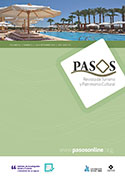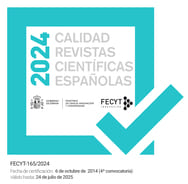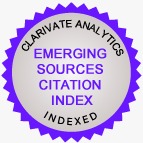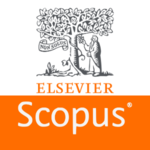Pronóstico postpandemia del turismo receptivo vía aérea mediante la utilización de modelos bayesianos. El caso de Colombia
DOI:
https://doi.org/10.25145/j.pasos.2025.23.047Palabras clave:
estudios culturales, política pública, turismo vía aérea, demanda turística, turismo receptivoResumen
En el presente artículo se realiza un pronóstico, a medio-largo plazo (2023-2030), de la entrada de turistas extranjeros al país vía aérea, utilizando como caso de estudio Colombia. Previamente, se analiza como el desarrollo y aplicación de las políticas públicas turísticas consiguieron potenciar el turismo, con énfasis en el turismo receptivo, en las últimas tres décadas, hasta el año 2019 (previo al periodo pandémico). Para conseguir tal objetivo, y como planteamiento metodológico, se desarrolla un modelo del tipo Bayesian Structural Time Series (BSTS), diseñado para trabajar con datos de series temporales, y muy utilizado para la selección de características, la previsión de series temporales, la predicción inmediata, y la inferencia del impacto causal. De los resultados obtenidos se puede destacar dos aspectos relevantes, en primer lugar, que el crecimiento de la demanda futura (entrada de turistas extranjeros no residentes vía aérea) mantendrá la tendencia mostrada en el periodo de recuperación post pandémico (2022). Y, en segundo lugar, los modelos presentan valores de error, medidos mediante el indicador MAPE, por debajo del 5%, lo que convierte al método BSTS en una metodología alternativa viable para el cálculo de pronóstico (a medio-largo plazo) de demanda turística.
Descargas
Datos de publicación
Perfil evaluadores/as N/D
Declaraciones de autoría
- Sociedad académica
- PASOS. Revista de Turismo y Patrimonio Cultural
- Editorial
- Instituto Universitario de Investigación Social y Turismo. Universidad de La Laguna (España) - Instituto Universitario da Maia ISMAI (Portugal)
Citas
Aerocivil 2023. Estadísticas de la actividad aeronáutica. Autoridad Aeronáutica Civil de Colombia. https://www.aerocivil.gov.co/atencion/estadisticas-de-las-actividades-aeronauticas
Alonso, J. 2022. “El turismo como motor de crecimiento económico en Colombia (2000-2019).” Revista Internacional de Turismo, Empresa y Territorio, 6 (1), 57-83. DOI: 10.21071/riturem.v6i1.14056
Bach, S.; Huang, B.; London, B. y Getoor, L. 2013. “Hinge-loss Markov Random Fields: Convex Inference for Structured Prediction.” arXiv:1309.6813 [cs.LG]. DOI: 10.48550/arXiv.1309.6813
Balli, F.; Balli, H.O. y Louis, R. 2016. “The impacts of immigrants and institutions on bilateral tourism flows.” Tourism Management, 52, 221–229. DOI: 10.1016/j.tourman.2015.06.021
Banco de la República de Colombia 2023. Estadísticas económicas. https://www.banrep.gov.co/es/estadisticas
Benavides, G. 2015. “Las políticas públicas del turismo receptivo colombiano.” Suma de Negocios, 6 (13), 66-73. DOI: 10.1016/j.sumneg.2015.08.005
Benavides, G. y Venegas, S. 2013. “Una aproximación a la competitividad, las tendencias y la política pública en el turismo colombiano.” Revista de Análisis Turístico, 16, 1-12.
Box, G. y Tiao, G. 1975. “Intervention analysis with applications to economic and environmental problems.” Journal of the American Statistical Association, 70, 70–79. DOI: 10.1080/01621459.1975.10480264
Blei, D.; Kucukelbir, A. y McAuliffe, J. 2017. “Variational inference: A review for statisticians”. Journal of the American Statistical Association, 112(518), 859-877. DOI: 10.1080/01621459.2017.1285773
Bolker, B. 2008. Ecological models and data in R. Princeton: Princeton University Press.
Brodersen, K.; Gallusser, F.; Koehler, J.; Remy, N. y Scott, S. 2015. “Inferring causal impact using Bayesian structural time-series models.” The Annals of Applied Statistics, 9, 247–274. DOI: 10.1214/14-AOAS788
Chen, J.; Li, G.; Wu, D. y Shen, S. 2019. “Forecasting seasonal tourism demand using a multiseries structural time series method.” Journal of Travel Research, 58 (1), 92–103. DOI: 10.1177/0047287517737191
Cho, V. 2003. “A comparison of three different approaches to tourist arrival forecasting.” Tourism Management, 24 (3), 323–330. DOI: 10.1016/S0261-5177(02)00068-7
Chu, F. 1998. “Forecasting tourism demand in Asian-Pacific countries.” Annals of Tourism Research, 25 (3), 597–615. DOI: 10.1016/S0160-7383(98)00012-7
Clark, J. 2005. “Why environmental scientists are becoming Bayesians”. Ecology Letters, 8(1), 2-14. DOI: 10.1111/j.1461-0248.2004.00702.x
Darani, H.R. y Asghari, H. 2018. “Study of international tourism demand in Middle East by panel data model.” International Journal of Culture, Tourism and Hospitality Research, 12 (1), 80–88. DOI: 10.1108/IJCTHR-03-2017-0030
de Gooijer, J. G. y Godefay, D. 1999. “Kernel-based multistep-ahead predictions of the U.S. short-term interest rate.” Tinbergen Institute Discussion Papers 99- 015/4. https://hdl.handle.net/11245/1.155836
DANE 2023. Estadísticas por tema. Departamento Administrativo Nacional de Estadística. https://www.dane.gov.co/index.php/estadisticas-por-tema
DANE 2023b. Cuenta satélite de turismo. Departamento Administrativo Nacional de Estadística. https://www.dane.gov.co/index.php/comunicados-y-boletines/cuentas-y-sintesis-nacionales/turismo
Díaz Olariaga, O. 2015. “Análisis de la aplicación de políticas públicas en el sector turismo. El caso de Colombia.” Gestión y Análisis de Políticas Públicas, 14, 115-130.
Díaz Olariaga, O. y Carvajal, A. 2020. “Perspectiva geográfica del desarrollo de la conectividad aérea en Colombia.” Boletín Geográfico, 42(2), 145 - 168
Díaz Olariaga, O. 2021. “Influencia de la política pública de transporte aéreo en la dinámica del flujo turístico. El caso de Colombia.” PASOS, Revista de Turismo y Patrimonio Cultural, 19(2), 285-301. DOI: 10.25145/j.pasos.2021.19.019
Díaz Olariaga, O. y Alonso, C. 2021. “Impact of airport policies on regional development. Evidence from the Colombian case.” Regional Science Policy & Practice, 1–26. DOI: 10.1111/rsp3.1248326
DNP 1998. Plan Nacional de Desarrollo 1998-2002. Bogotá: Departamento Nacional de Planeación (Colombia).
DNP 2002. Plan Nacional de Desarrollo 2002-2006. Bogotá: Departamento Nacional de Planeación (Colombia).
DNP 2006. Plan Nacional de Desarrollo 2006-2010. Bogotá: Departamento Nacional de Planeación (Colombia).
DNP 2010. Plan Nacional de Desarrollo 2010-2014. Bogotá: Departamento Nacional de Planeación (Colombia).
DNP 2014. Plan Nacional de Desarrollo 2014-2018. Bogotá: Departamento Nacional de Planeación (Colombia).
DNP 2018. Plan Nacional de Desarrollo 2018-2022. Bogotá: Departamento Nacional de Planeación (Colombia).
Durbin, J. y Koopman, S. 2012. Time Series Analysis by State Space Methods. Oxford: Oxford University Press.
FONTUR 2023. Fontur Colombia comunicados. https://acortar.link/cdjlfu
Fourie, J. y Santana-Gallego, M. 2011. “The impact of mega-sport events on tourist arrivals.” Tourism Management, 32 (6), 1364–1370. DOI: 10.1016/j.tourman.2011.01.011
Gelman, A.; Carlin, J.B.; Stern, H.S.; Dunson, D.; Vehtari, A. y Rubin, D. 2013. Bayesian data analysis. New York: Chapman and Hall / CRC Press.
George, E. y McCulloch, R. 1997. “Approaches for Bayesian Variable Selection.” Statistica Sinica. 7. 339-373. http://www.jstor.org/stable/24306083
Gerakis, A.S. 1965. “Effects of exchange-rate devaluations and revaluations on receipts from tourism.” Staff Papers, 12 (3), 365–384.
Giri, S.; Purkayastha, S.; Hazra, S.; Chanda, A.; Das, I. y Das, S. (2020). “Prediction of Monthly Hilsa (Tenualosa ilisha) Catch in the Northern Bay of Bengal using Bayesian Structural Time Series Model.” Regional Studies in Marine Science. 39, 101456. DOI: 10.1016/j.rsma.2020.101456
Goh, C. y Law, R. 2002. “Modeling and forecasting tourism demand for arrivals with stochastic nonstationary seasonality and intervention.” Tourism Management, 23 (5), 499–510. DOI: 10.1016/S0261-5177(02)00009-2
Gray, H.P. 1966. “The demand for international travel by the United States and Canada.” International Economic Review, 7 (1), 83–92.
Gunter, U. y Onder, I. 2016. “Forecasting city arrivals with Google analytics.” Annals of Tourism Research, 61, 199–212. DOI: 10.1016/j.annals.2016.10.007
Hamilton, D. 1994. Time Series Analysis. Princeton: Princeton University Press.
Hasyyati, A.; Indriani, R. y Lestari, T. (2022). “Predicting Tourism Demand in Indonesia Using Google Trends Data”. arXiv:2211.13938v1 [stat.AP]. DOI: 10.48550/arXiv.2211.13938
Hassani, H.; Silva, E.S.; Antonakakis, N.; Filis, G. y Gupta, R. 2017. “Forecasting accuracy evaluation of tourist arrivals.” Annals of Tourism Research, 63, 112–127. DOI: 10.1016/j.annals.2017.01.008
Harvey, A.; Trimbur, T. y Van Dijk, H. 2007. “Trends and Cycles in Economic Time Series: A Bayesian Approach.” Journal of Econometrics, 140, 618-649. DOI: 10.1016/j.jeconom.2006.07.006
Hoeting, J.; Madigan, D.; Raftery, A. y Volinsky, C. 1999. “Bayesian Model Averaging: A Tutorial.” Statistical Science, 14(4), 382-417. https://www.jstor.org/stable/2676803
Hu, M. y Song, H. 2019. “Data source combination for tourism demand forecasting.” Tourism Economics, 26(7), 1248-1265. DOI: 10.1177/1354816619872592
Hu, Y. 2021a. “Forecasting the demand for tourism using combinations of forecasts by neural network-based interval grey prediction models.” Asia Pacific Journal of Tourism Research, 26(12), 1350–1363. DOI: 10.1080/10941665.2021.1983623
Hu, Y. 2021b. “Forecasting tourism demand using fractional grey prediction models with Fourier series.” Annals of Operations Research, 300(2), 467–491. DOI: 10.1007/s10479-020-03670-0
Hu, Y. y Jiang, P. 2020. “Fuzzified grey prediction models using neural networks for tourism demand forecasting.” Computational and Applied Mathematics. DOI: 10.1007/s40314-020-01188-6
Hu, Y.; Jiang, P. y Lee, P. C. 2019. “Forecasting tourism demand by incorporating neural networks into grey-Markov models.” Journal of the Operational Research Society, 70(1), 12–20. DOI: 10.1080/01605682.2017.1418150
Huang, Y. y Lee, Y. H. 2011. “Accurately forecasting model for the stochastic volatility data in tourism demand.” Modern Economy, 2(5), 823–829. DOI: 10.4236/me.2011.25091
Hyndman, R. y Athanasopoulos, G. 2018. Forecasting: Principles and Practice. OTexts. https://otexts.com/fpp3/
Jalali, P. y Rabotyagov, S. 2020. “Quantifying cumulative effectiveness of green stormwater infrastructure in improving water quality.” Science of the Total Environment, 731, 138953. DOI: 10.1016/j.scitotenv.2020.138953
Jones, G. y Qin, Q. 2022. “Markov Chain Monte Carlo in Practice.” Annual Review of Statistics and Its Application, 9(1), 557-578. DOI: 10.1146/annurev-statistics-040220-090158
Kéry, M. 2010. Introduction to WinBUGS for Ecologists. Burlington (MA): Academic Press.
Koller, D. y Friedman, N. 2009. Probabilistic Graphical Models. Cambridge, MA: MIT Press.
Koop, G.; Poirier, D. y Tobias, J. 2007. Bayesian Econometric Methods. Cambridge: Cambridge University Press.
Li, Y.; Lin, Z. y Xiao, S. 2022. “Using social media big data for tourist demand forecasting: A new machine learning analytical approach.” Journal of Digital Economy, 1, 32–43. DOI: 10.1016/j.jdec.2022.08.006
Li, G.; Wong, K.; Song, H. y Witt, S. 2006. “Tourism Demand Forecasting: A Time Varying Parameter Error Correction Model.” Journal of Travel Research, 45 (2): 175–85. DOI: 10.1177/0047287506291596
Li, H.; Goh, C.; Hung, K. y Chen, J. 2018. “Relative Climate Index and Its Effect on Seasonal Tourism Demand.” Journal of Travel Research, 57(2), 178-192. DOI: 10.1177/0047287516687409.
Lim, C. y McAleer, M. 2001. “Forecasting tourist arrivals.” Annals of Tourism Research, 28 (4), 965–977. DOI: 10.1016/S0160-7383(01)00006-8
Liu, Y.; Tseng, F. y Tseng, Y. 2018. “Big Data analytics for forecasting tourism destination arrivals with the applied Vector Autoregression model.” Technological Forecasting and Social Change, 130, 123–134. DOI: 10.1016/j.techfore.2018.01.018
Liu, X.; Peng, H.; Bai, Y.; Zhu, Y. y Liao, L. 2014. “Tourism flows prediction based on an improved grey GM(1,1) model.” Procedia - Social and Behavioral Sciences, 138, 767–775. DOI: 10.1016/j.sbspro.2014.07.256
Liu, S.; Yang, Y. y Forrest, J. 2017. Grey data analysis: Methods, models and applications. Heidelberg: Springer.
Long, W.; Liu, C. y Song, H. 2019. “Pooling in Tourism Demand Forecasting.” Journal of Travel Research, 58(7), 1161-1174. DOI: 10.1177/0047287518800390
Madhavan M.; Sharafuddin M.; Piboonrungroj, P. y Yang, C. 2023. “Short-term forecasting for airline industry: the case of Indian air passenger and air cargo.” Global Business Review, 24(6), 1145-1179. DOI: 10.1177/0972150920923316.
Martin, C.A. y Witt, S.F. 1989. “Forecasting tourism demand: a comparison of the accuracy of several quantitative methods.” International Journal of Forecasting, 5 (1), 7–19. DOI: 10.1016/0169-2070(89)90059-9
McElreath, R. 2016. Statistical rethinking: A Bayesian Course with examples in R and Stan. Boca Ratón: CRS Press.
Menchero, M. 2018. “Colombia en posconflicto: ¿turismo para la paz o paz para el turismo?”. Araucaria, Revista Iberoamericana de Filosofía, Política y Humanidades, 39, 415-438
MinCIT 2022. El turismo en cifras. Bogotá: Ministerio de Comercio, Industria y Turismo de Colombia.
MinCIT 2023. Informes de turismo. Ministerio de Comercio, Industria y Turismo de Colombia. https://www.mincit.gov.co/estudios-economicos/estadisticas-e-informes/informes-de-turismo
MinCIT 2023b. Noticias de turismo. Ministerio de Comercio, Industria y Turismo de Colombia. https://www.mincit.gov.co/prensa/noticias/turismo/turismo-recuperandose-cifras-cuenta-satelite-2022
MinCIT 2018. Resultados para el turismo para el año 2018. Bogotá: Ministerio de Comercio, Industria y Turismo de Colombia.
Matzner-Lofber, E.; Gannoun, A. y de Gooijer, J. 1998. “Nonparametric forecasting: a comparison of three kernel-based methods.” Communications in Statistics - Theory and Methods 27(7), 1593-1617. DOI: 10.1080/03610929808832180
Pan, B. y Yang, Y. 2017. “Forecasting Destination Weekly Hotel Occupancy with Big Data.” Journal of Travel Research, 56 (7): 957–70. DOI: 10.1177/0047287516669050
Peng, B.; Song, H. y Crouch, G.I. 2014. “A meta-analysis of international tourism demand forecasting and implications for practice.” Tourism Management, 45, 181–193. DOI: 10.1016/j.tourman.2014.04.005
Peters, J.; Janzing, D. y Schölkopf, B. 2017. Elements of Causal Inference: Foundations and Learning Algorithms. Cambridge, MA: MIT Press.
Ren, L. y Glasure, Y. 2009. “Applicability of the revised mean absolute percentage errors (mape) approach to some popular normal and non-normal independent time series.” International Advances in Economic Research, 15, 409–420. DOI: 10.1080/01621459.1975.10480264
Rodríguez, Y.; Pineda, W. y Díaz Olariaga, O. 2020. “Air traffic forecast in post-liberalization context: a Dynamic Linear Models approach.” Aviation, 24(1), 10-19. DOI: 10.3846/aviation.2020.12273
Santana, L.J. 2019. Nowcasting with Google Trends: Dynamics of the Monthly Economic Activity, Private Consumption and Investment based on Google Trends Data and a Bayesian Structural Time Series Model. XIII Foro de Investigadores de Bancos Centrales del Consejo Monetario Centroamericano. Ciudad de Guatemala, Guatemala, 5-6 Sept. 2019. https://www.secmca.org/recard/index.php/foro/article/view/154
Scott, S. y Varian, H. 2014. “Predicting the present with Bayesian structural time series.” International Journal of Mathematical Modelling and Numerical Optimisation, 5(1-2), 4-23.
Scott, S. y Varian, H. 2015. “Bayesian Variable Selection for Nowcasting Economic Time Series.” NBER Chapters, in: Economic Analysis of the Digital Economy, 119-135. National Bureau of Economic Research, Inc.
Song, H.; Dwyer, L.; Li, G. y Cao, Z. 2012. “Tourism Economics Research: A Review and Assessment.” Annals of Tourism Research, 39 (3): 1653–82. DOI: 10.1016/j.annals.2012.05.023
Song, H. y Witt, S. 2006. “Forecasting international tourist flows to Macau.” Tourism Management, 27 (2), 214–224. DOI: 10.1016/j.tourman.2004.09.004
Sun, X.; Sun, W.; Wang, J. y Gao, Y. 2016. “Using a grey-Markov model optimized by cuckoo search algorithm to forecast the annual foreign tourist arrivals to China.” Tourism Management, 52, 369–379. DOI: 10.1016/j.tourman.2015.07.005
Tica, J. y Kozic, I. 2015. “Forecasting Croatian inbound tourism demand.” Economic Research, 28(1), 1046-1062. DOI: 10.1080/1331677X.2015.1100842
Toro, G. 2003. “La política pública de turismo en Colombia.” Turismo y Sociedad, 2, 9–16.
Toro, G.; Galán, M.; Pico, L.; Rozo, E. y Suescún, H. 2015. “La planificación turística desde el enfoque de la competitividad: caso Colombia.” Turismo y Sociedad, vol. 16, 131-185.
Wan, S. y Song, H. 2018. “Forecasting turning points in tourism growth.” Annals of Tourism Research, 72, 156–167. DOI: 10.1016/j.annals.2018.07.010
Wang, C. 2004. “Predicting tourism demand using fuzzy time series and hybrid grey theory.” Tourism Management, 25 (3), 367–374. DOI: 10.1016/S0261-5177(03)00132-8
Witt, S.; Song, H. y Louvieris, P. 2003. “Statistical testing in forecasting model selection.” Journal of Travel Research, 42(2), 151-158. DOI: 10.1177/0047287503253941.
Wu, C. 2010. Econometric analysis of tourist expenditures. Ph.D. Thesis, Hong Kong Polytechnic University. https://theses.lib.polyu.edu.hk/bitstream/200/5916/1/b23930639.pdf
Wu, D.C.; Song, H. y Shen, S. 2017. “New developments in tourism and hotel demand modeling and forecasting.” International Journal of Contemporary Hospitality Management, 29 (1), 507–529. DOI: 10.1108/IJCHM-05-2015-0249
Xie, G.; Li, X.; Qian, Y. y Wang, S. 2020. “Forecasting tourism demand with KPCA-based web search indexes.” Tourism Economics, 27 (4), 721–743. DOI: 10.1177/1354816619898576
Xu, X.; Law, R.; Chen, W. y Tang, L. 2016. “Forecasting tourism demand by extracting fuzzy Takagi–Sugeno rules from trained SVMs.” CAAI Transactions on Intelligence Technology, 1(1), 30-42. DOI: 10.1016/j.trit.2016.03.004
Yin, L. 2020. “Forecast without historical data: objective tourist volume forecast model for newly developed rural tourism areas of China.” Asia Pacific Journal of Tourism Research, 25(5), 555-571. DOI: 10.1080/10941665.2020.1752755
Yang, Y.; Fik, T. y Zhang, H. 2017. “Designing a Tourism Spillover Index Based on Multidestination Travel: A Two-Stage Distance-Based Modeling Approach.” Journal of Travel Research, 56 (3): 317–33. DOI: 10.1177/0047287516641782
Zhang, Y. y Fricker, J. 2021. “Quantifying the Impact of COVID-19 on Non-Motorized Transportation: A Bayesian Structural Time Series Model.” Transport Policy, 103, 11-20. DOI: 10.1016/j.tranpol.2021.01.01
Descargas
Publicado
Cómo citar
Número
Sección
Licencia
Derechos de autor 2024 Yesid Rodríguez, Oscar Díaz Olariaga, Angélica López

Esta obra está bajo una licencia internacional Creative Commons Atribución-NoComercial-SinDerivadas 4.0.
Confirmo que el trabajo es original (de mi/nuestra autoría), y que no se someterá a otras revistas o publicaciones hasta la resolución definitiva del proceso de revisión en PASOS, RTPC.
Autorizo la publicación de mi trabajo por PASOS, RTPC de acceso abierto y gratuito en cualquiera de los formatos que estime oportunos, por un plazo indeterminado y a título de colaboración no remunerada.
Asimismo, el/los autor/es entiende/n que el trabajo publicado podrá vincularse o depositarse en cualquier servidor o ser incluido en otras publicaciones (republicación), siempre y cuando el nuevo lugar y/o la nueva edición referencie la publicación original y reconozca la autoría y la propiedad del copyright de las publicaciones de PASOS RTPC.
Los/as autores/as entienden que se realizará una comprobación de plagio-autoplagio, pudiendo retirarse el artículo en cualquier momento del flujo editorial










